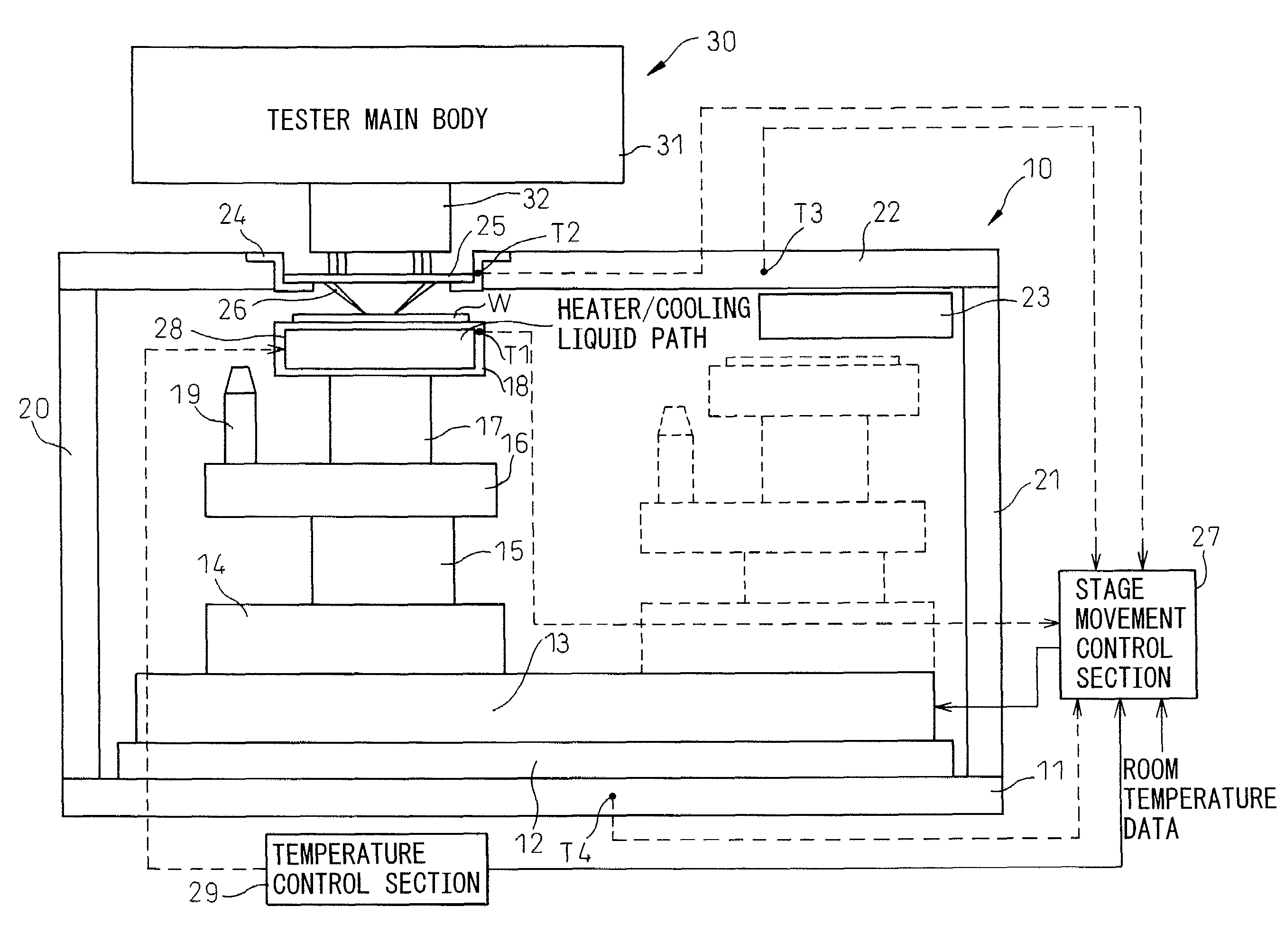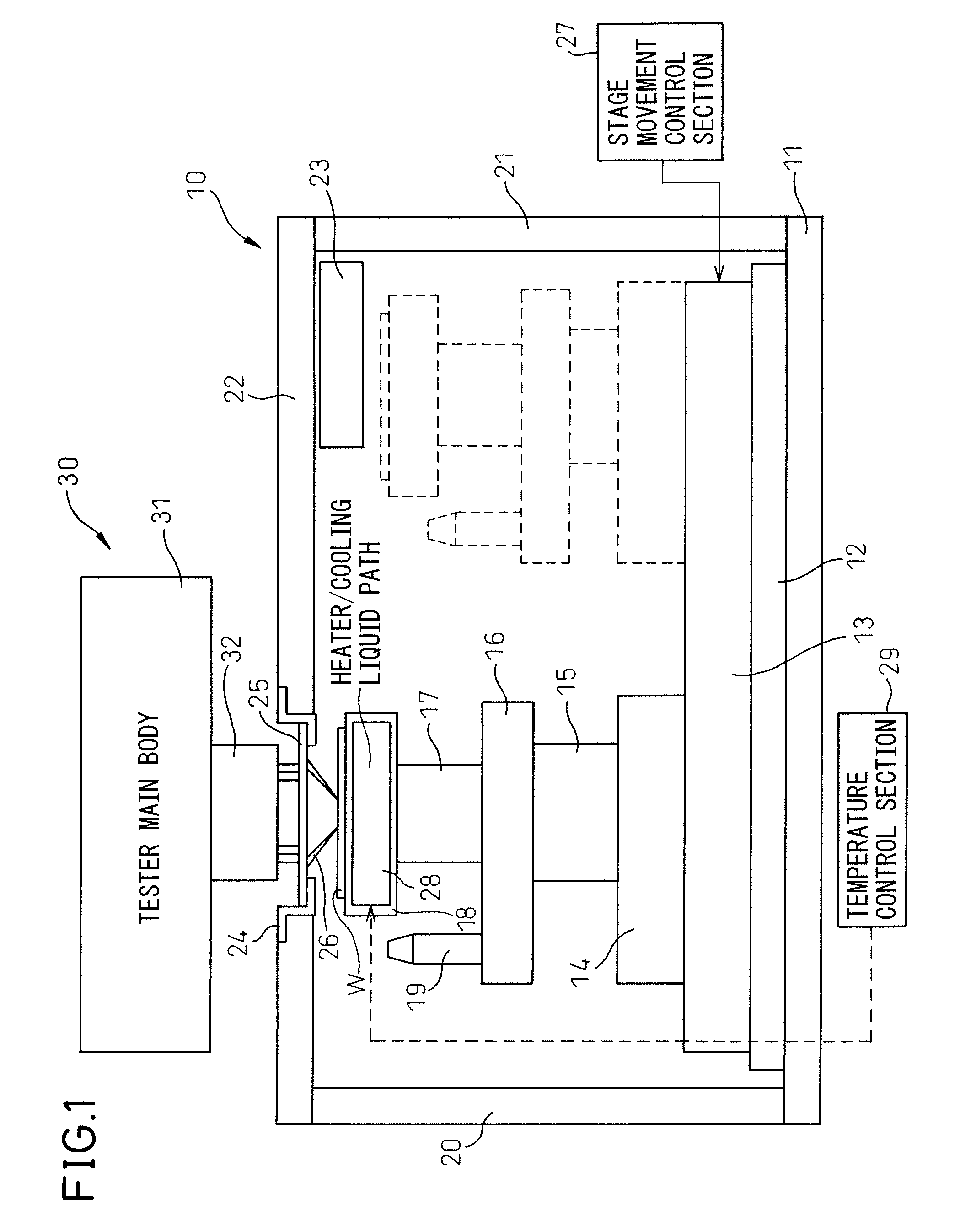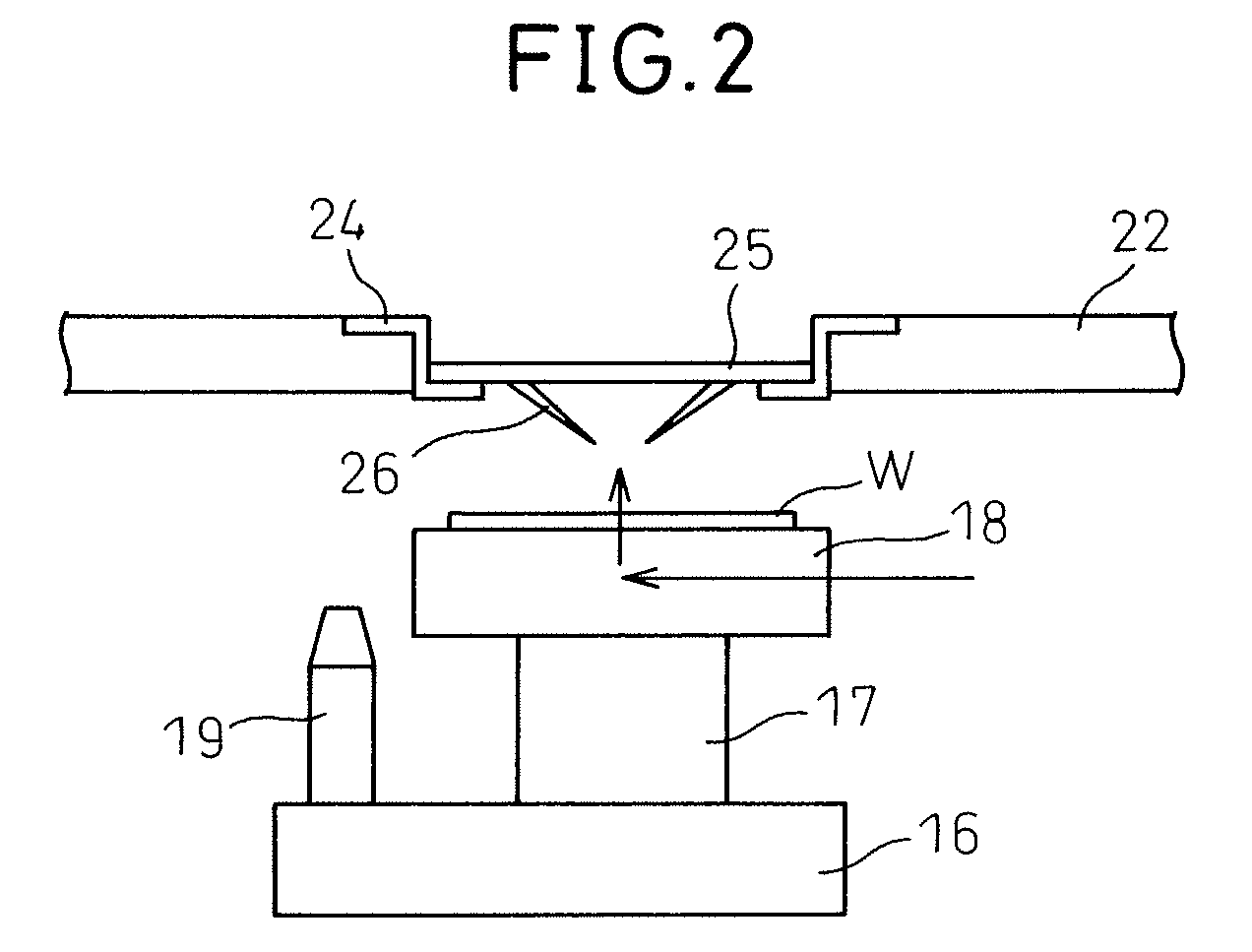Prober and probe contact method
a probe and contact method technology, applied in the direction of instrumentation, semiconductor/solid-state device testing/measurement, fault location by increasing destruction at fault, etc., can solve the problem that the probe may not come into contact with the electrode properly, the frequency of probing errors cannot be ignored, and the size of the electrode is becoming smaller and smaller. problem, to achieve the effect of reducing throughpu
- Summary
- Abstract
- Description
- Claims
- Application Information
AI Technical Summary
Benefits of technology
Problems solved by technology
Method used
Image
Examples
Embodiment Construction
[0035]FIG. 4 is a diagram showing a general configuration of a wafer test system in an embodiment of the present invention. As obvious from the comparison with FIG. 1, the present embodiment differs from the conventional example in that a temperature sensor T1 is provided to the wafer stage 18, a temperature sensor T2 is provided to the card holder 24, a temperature sensor T3 is provided to the head stage 22, and a temperature sensor T4 is provided to the base 11, respectively. The temperature data detected by each temperature sensor is sent to the stage movement control section 27 and at the same time, temperature control information is sent from the temperature control section 29 to the stage movement control section 27, and the stage movement control section 27 calculates the change in the relative position between the probe 26 and the electrode on the die of the wafer W due to the change in temperature based on the data using a prediction model and corrects the amount of movemen...
PUM
 Login to View More
Login to View More Abstract
Description
Claims
Application Information
 Login to View More
Login to View More - R&D
- Intellectual Property
- Life Sciences
- Materials
- Tech Scout
- Unparalleled Data Quality
- Higher Quality Content
- 60% Fewer Hallucinations
Browse by: Latest US Patents, China's latest patents, Technical Efficacy Thesaurus, Application Domain, Technology Topic, Popular Technical Reports.
© 2025 PatSnap. All rights reserved.Legal|Privacy policy|Modern Slavery Act Transparency Statement|Sitemap|About US| Contact US: help@patsnap.com



